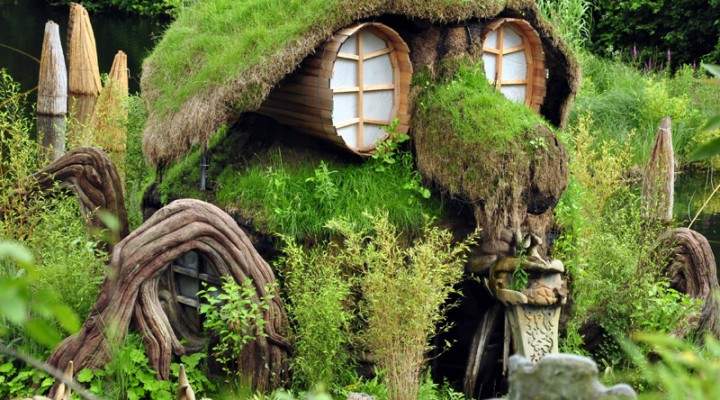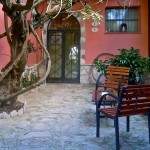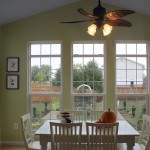What to plant in a shady garden is only a dilemma if it isn’t thought through properly.
Many options exist when it comes to manipulating the amount of shade in your garden. But, how shady is the area to start with? Obviously, a shady garden is one with limited light. Solid shade, where light is quite dim, is often caused by tall buildings and walls, and is common in urban areas with high-density housing. Tall screening shrubs and hedging, or all-weather pergolas, also create low light conditions. Such garden areas are often in shadow for most of the day.
Dappled shade, where more light penetrates to ground level, usually results from having tree canopies and variable amounts of light infiltrate depending on the tree type. Exotic trees usually create heavier shade than a native eucalypt, for example, which has more open leaf coverage. Eucalypt leaves are held at an oblique angle to the sun to reduce moisture loss, resulting in more light at ground level.
Some gardens will be in shade for only part of the day because as the sun moves, so do the shadows. Others are sunless for all or most of the day and these are our focus here. One approach to an overly-shaded garden is to improve the light conditions. It may be out of your control if shade is cast by built structures or screening plants, but large plants can be pruned to reduce their overall size, and therefore their shadow size, and to thin out their foliage to allow more light through the branch structure.
The area beneath trees can be quite dark. Raising the tree canopy level to create more space between the ground and the branches will allow more light to find its way under the tree. A coat of pale or light-coloured paint on a wall or fence also brightens the area beneath a tree by reflecting available light rather than absorbing it.
Soil in shaded areas can be a problem, so good preparation beneath ground level is crucial. Common problems are soil that is too wet and airless, or compacted and dry, with root competition where water doesn’t soak in. If it’s too soggy, add some sub-surface drainage to carry away excess water. One thing is certain — soil work will improve the growing conditions and help your plants thrive. Work over the soil, digging to around half a metre if possible, to introduce air.
Adding organic matter, such as compost, is also essential to enrich depleted soils. Shady soils are often acidic and, while this may suit acid-loving plants such as azaleas, it may not suit all your plant choices. Treatment with organic matter will help neutralise the soil pH level and you can add lime for a quicker fix.
Plants cope with differing levels of light for healthy growth, ranging from very low light levels in dark areas to filtered light in more dappled spaces. Monitor your garden to assess its level of light and how it changes during the day. This will help you match up plants to your garden conditions.
Very low-light areas that are fully shaded for most of the day are cooler in summer, requiring less watering as there is less evaporation than in lighter, warmer areas. Many of the large-leaf tropical-looking plants are suitable to grow in these moist conditions. Calathea and ctenanthe, with colourful leaf markings, boldly-shaped alocasia and colocasia, known as elephant’s ears, together with heliconias and ornamental gingers are all good choices. Bird’s nest fern (Asplenium spp.), hare’s foot fern (Davallia spp.) and rasp fern (Doodia aspera) will thrive, as will tree ferns.
If flower colour is more appealing, try Camellia japonica, Plectranthus Mona Lavender’ or Justicia carnea for shrubs, or Clivia “Belgian hybrid” or Lamium for ground cover. Plectranthus argentatus brightens a low-light spot with spreading silver foliage.
Areas with filtered light from trees are warmer than full-shade spaces, and winter sun, as it’s low in the sky, often reaches beneath tree branches, making the conditions variable. Azaleas and begonias suit these dappled conditions.
In planting areas beneath trees, where there is root competition for moisture and nutrition, and beneath house eaves or other areas in shadow, the soil is usually quite dry. Plants preferring these dry shady situations include the renga renga lily, lady palm, burrawang, aspidistra, dietes and dracaena. Tecomanthe hillii is an attractive climber for dry shade.
Of course, in-ground planting isn’t the only option. Use pots to provide specialised growing mediums or to add visual excitement with height variation and shape. Potted bromeliads in their numerous varieties are spectacular. Consult your local garden centre for horticultural advice about more shade-loving plant options to suit your local climate.


















